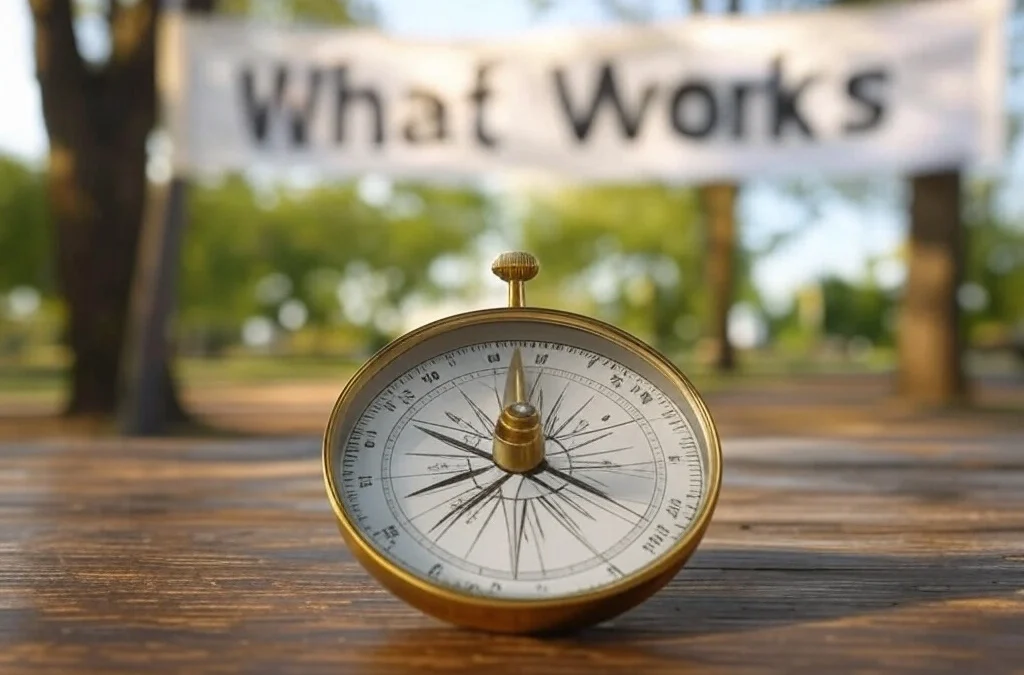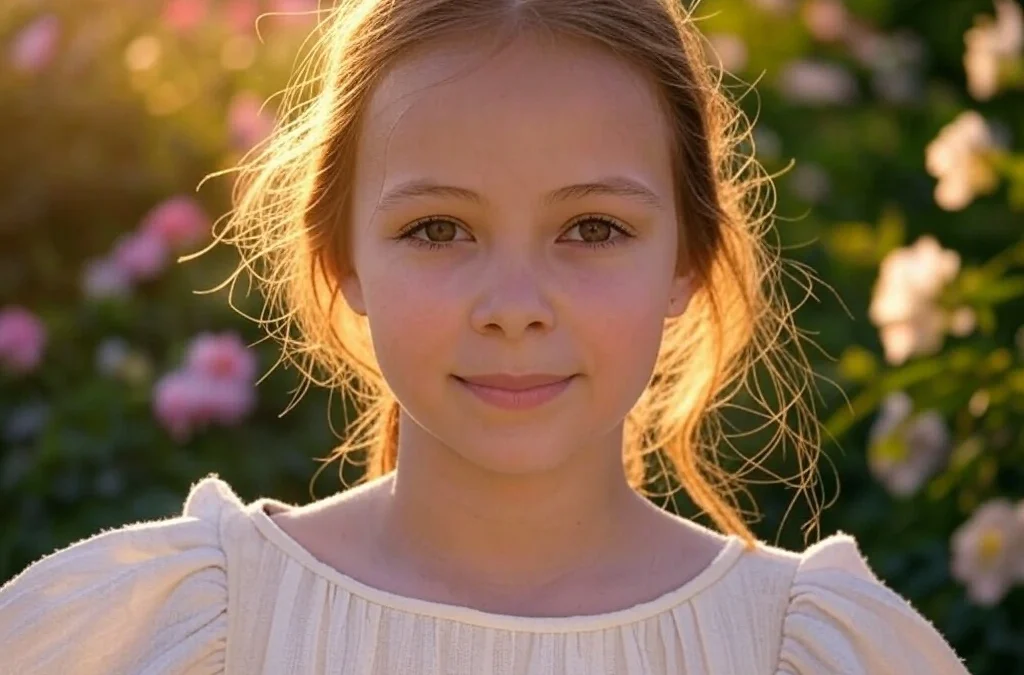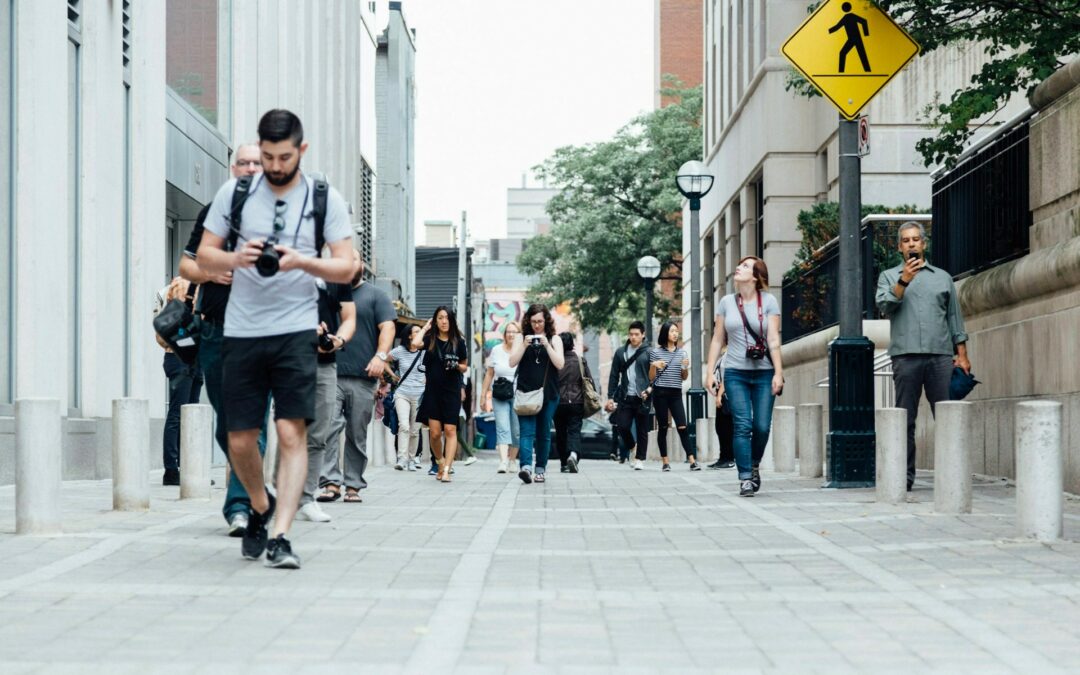Collective memory forms the bedrock of society, intertwining shared experiences and common knowledge across generations. It shapes our understanding of history, culture, and identity. This article delves into the top 20 examples of collective memory, showcasing how they forge powerful connections between people and their past. From historical events to cultural phenomena, these examples vividly illustrate the concept’s impact and significance.
Understanding collective memory is not just about listing events; it’s about grasping how these shared memories influence our perceptions, beliefs, and actions. Each example in our list not only represents a moment in time but also reflects the broader narrative that communities and societies create. As we explore these powerful examples, we gain insight into how collective memory molds our collective identity and the way we view the world.
What is Collective Memory?
Collective memory is the shared pool of memories, knowledge, and information that a group or society collectively holds. It goes beyond individual experiences, shaping cultural identity and influencing how we perceive and act today. Typically, collective memory is kept alive through storytelling, rituals, commemorations, and education, fostering strong social bonds and a sense of community belonging. It’s a crucial element in the continuity and evolution of societies.
This concept of collective memory isn’t fixed; it changes as society does, reflecting new values, attitudes, and understandings. Its dynamic nature means that the focus of memory shifts over time, aligning with current societal norms. Subject to various interpretations, collective memory can be shaped by media, politics, and societal power structures.
Collective memory also takes various forms. It can be tangible, like monuments, museums, and historical texts, or intangible, like oral histories, traditions, and shared practices. These forms act as reminders of the past, keeping memories relevant. It’s important to note that collective memory, while a group phenomenon, doesn’t always reflect a unanimous view within the group. This can lead to diverse and sometimes conflicting interpretations of the past, underscoring the complex nature of how societies remember and understand their collective experiences.
The Best Examples of Collective Memory
1. World War II Memories
The collective memory of World War II varies significantly across different nations. For example, in the United States, it’s often remembered as a time of unity and triumph against fascism, marked by events like D-Day and the atomic bombings of Hiroshima and Nagasaki. In contrast, in Russia, the Great Patriotic War (as WWII is known there) is remembered for the immense sacrifice and victory against Nazi Germany, epitomized by the Battle of Stalingrad.
2. 9/11 Attacks
The terrorist attacks of September 11, 2001, have a profound collective memory in the United States. It’s remembered as a day of tragedy, heroism, and a turning point in national security and foreign policy. This memory influences ongoing attitudes towards terrorism, national security, and even immigration.
3. The Civil Rights Movement
In the United States, the collective memory of the Civil Rights Movement includes key figures like Martin Luther King Jr. and events such as the Montgomery Bus Boycott and the March on Washington. These memories symbolize the struggle and progress towards racial equality and continue to influence contemporary discussions on race relations.
4. The Fall of the Berlin Wall
In Germany, the fall of the Berlin Wall in 1989 is a potent symbol of the end of Cold War tensions and the reunification of East and West Germany. It’s remembered as a moment of joy and liberation, symbolizing the triumph of democracy over authoritarianism.
5. The French Revolution
In France, the collective memory of the French Revolution includes iconic events like the Storming of the Bastille and the Reign of Terror. It’s a complex memory that encompasses themes of liberty, fraternity, and equality, but also violence and upheaval. This memory shapes the national identity and republican values of France.
6. The Apartheid Era in South Africa
The collective memory of apartheid in South Africa is one of oppression, resistance, and eventual liberation. Key figures like Nelson Mandela and events like the Soweto Uprising are central to this memory, which influences current attitudes towards race, equality, and reconciliation in South Africa.
7. The Great Depression
In the United States and many other countries, the collective memory of the Great Depression of the 1930s includes images of soup kitchens, Dust Bowl farmers, and unemployment lines. This period is remembered as a time of economic hardship and struggle, influencing contemporary economic policies and social welfare systems.
8. The Cultural Revolution in China
In China, the Cultural Revolution (1966-1976) is a complex and often sensitive part of collective memory. It’s remembered for its radical social upheaval, the persecution of intellectuals, and the widespread propaganda campaigns. This memory plays a role in shaping current Chinese policies and attitudes towards cultural and political dissent.
9. The Spanish Flu Pandemic
The collective memory of the 1918 Spanish Flu pandemic, particularly in the context of the recent COVID-19 pandemic, highlights the impact of global health crises on society. It’s remembered for its massive death toll and the way it overwhelmed health systems, influencing current public health policies and responses to pandemics.
10. Indian Independence and Partition
In India and Pakistan, the collective memory of independence from British rule and the subsequent partition is a mixture of triumph and tragedy. It includes the non-violent resistance led by Mahatma Gandhi, the joy of independence, and the painful division of the subcontinent. This memory influences current Indo-Pakistani relations and attitudes towards colonialism and nationalism.
11. The Moon Landing (1969)
For many, especially in the United States, the Apollo 11 moon landing is a symbol of technological achievement and national pride. The phrase “One small step for man, one giant leap for mankind” by Neil Armstrong encapsulates this historic event, remembered as a pinnacle moment in the Space Race during the Cold War.
12. The Chernobyl Disaster (1986)
In Ukraine and much of Eastern Europe, the Chernobyl nuclear disaster is a poignant memory symbolizing the dangers of nuclear power and governmental mismanagement. The event and its aftermath, including the evacuation and the Chernobyl Exclusion Zone, continue to impact attitudes towards nuclear energy and environmental policies.
13. The Titanic Sinking (1912)
The sinking of the RMS Titanic is a collective memory that resonates globally, symbolizing human tragedy intertwined with themes of class disparity and the fallibility of technological hubris. It has been cemented in popular culture through films, books, and memorials, highlighting the enduring fascination and emotional impact of this event.
14. The Assassination of John F. Kennedy (1963)
In the United States, the assassination of President Kennedy is a seminal moment in collective memory, often remembered as a loss of innocence for the nation. This event is marked by the question of “Where were you when Kennedy was shot?” underscoring its impact on American society and politics.
15. The Rwandan Genocide (1994)
In Rwanda and across the world, the 1994 genocide against the Tutsi is a harrowing memory of ethnic violence. It’s a stark reminder of the horrors of genocide and has significantly influenced international human rights policies and interventions in conflict zones.
16. The Discovery of Insulin (1922)
The discovery of insulin is a landmark event in medical history, especially for the diabetes community. It transformed diabetes from a fatal diagnosis to a manageable condition. This achievement is celebrated in the medical field and has shaped healthcare policies and research priorities.
17. The Sinking of the Lusitania (1915)
The sinking of the RMS Lusitania by a German U-boat during World War I is a collective memory that contributed to changing public opinion about the war, particularly in the United States. It’s remembered as a factor in the U.S. decision to enter the war and as a symbol of the tragedies of unrestricted submarine warfare.
18. The Salem Witch Trials (1692-1693)
In American history, the Salem Witch Trials are a potent example of mass hysteria, injustice, and the dangers of extremism. This event is remembered as a cautionary tale about the consequences of superstition and the importance of due process in the legal system.
19. The First Women’s Suffrage (New Zealand, 1893)
New Zealand’s achievement as the first country to grant women the right to vote is a significant collective memory, representing a milestone in the global fight for gender equality. This event is a source of national pride and continues to inspire gender equality movements worldwide.
20. The Fall of Constantinople (1453)
The fall of Constantinople to the Ottoman Empire marks a pivotal moment in world history, often seen as the end of the Middle Ages. This event is remembered for its cultural and religious significance, particularly in the context of the Christian and Islamic worlds, and its impact on European history.
Why Are Collective Memories Important?
Collective memories are vital because they shape a society’s identity, influence its values, and guide future actions. These memories create a shared reference point, fostering social cohesion and a sense of belonging within communities. They preserve and transmit historical and cultural knowledge, essential for understanding the past and shaping the future. Collective memories also play a pivotal role in education, offering historical lessons that inform decision-making and policy development. They contribute significantly to healing and reconciliation in post-conflict societies, aiding communities in coming to terms with their history. In summary, collective memories are key to maintaining cultural heritage, building community resilience, and steering societal progress.
Additionally, collective memories underpin collective learning and identity formation. Through shared stories, rituals, and commemorations, they pass down values and norms, ensuring cultural continuity in a rapidly changing world.
In the realm of diversity and multiculturalism, collective memories are crucial for fostering empathy and understanding between different groups. Acknowledging and sharing the diverse histories and experiences of various communities promotes inclusivity and respect for differences.
Collective memories can also act as catalysts for social change and justice. Remembering past struggles, injustices, and achievements inspires current and future generations to pursue change, uphold human rights, and work towards a better society.
In the digital age, collective memories have evolved. They are formed and influenced not only by traditional means but also through digital platforms, making them more accessible and dynamic. This highlights their adaptability and ongoing relevance in today’s society.
In conclusion, collective memories are more than just reflections of the past; they are dynamic components of societal identity and consciousness, playing a crucial role in shaping both the present and the future.
The Many Faces of Our Shared Past
Collective memory, a concept as intriguing as it is essential to our social fabric, comes in various forms, each painting a unique picture of our shared past and informing our present. At its core, collective memory binds individuals together, creating a sense of shared history and identity.
One fundamental type is the historical memory. This form of collective memory is rooted in key events and figures that have shaped the course of history. Think of the moon landing, wars, significant political events, or monumental scientific breakthroughs. These memories often find themselves etched in school textbooks, commemorated on public holidays, or immortalized in monuments and museums. They serve as the backbone of a nation’s narrative, providing a common story that citizens can identify with.
Cultural memory, on the other hand, delves into the shared practices, traditions, and beliefs of a group. This type is less about the factual accuracy of events and more about the rituals and symbols that define a culture’s identity. From traditional cuisines to folk tales and music, cultural memory is a tapestry of the everyday practices that give a community its distinct flavor and color.
Then there’s the collective autobiographical memory. This type is more personal, more immediate. It’s about the shared experiences of a generation or a group within their lifetime. It could be about the first time a generation used the internet, the impact of a popular TV show, or the collective experience of a national crisis. These memories shape the attitudes and perspectives of a generation, often creating a unique bond among its members.
Each type of collective memory plays a vital role in knitting the fabric of society. Historical memory gives us a sense of our past, cultural memory connects us to our roots, and autobiographical memory resonates with our personal experiences within the broader societal context.
Understanding these different types of collective memory is crucial. They are not just passive reflections of our past; they actively shape our understanding of who we are and guide our collective steps into the future. As we navigate through an ever-evolving world, these shared memories serve as anchors, reminding us of our common experiences, struggles, and triumphs. They remind us that despite our differences, we share a narrative that’s inherently human.
The Psychology Behind Collective Memory
In the intricate tapestry of human experience, collective memory stands out as a fascinating phenomenon, blending individual recollections into a shared narrative. This concept, which transcends the personal and embraces the communal, is deeply rooted in the psychology of how we remember and why we remember together.
At its heart, collective memory is not merely a repository of shared facts; it’s an active process of collective remembering and forgetting. Psychologically, it involves the interplay of individual memories and societal influences. Each person’s recollection of an event is shaped not only by their direct experience but also by the social context in which they recall it. When we share our stories and hear others’, our individual memories become part of a larger story. This process is facilitated by what psychologists term ‘social frameworks‘, the societal structures that influence what and how we remember as a group.
Interestingly, collective memory is as much about emotion as it is about facts. Shared emotional responses to events, such as pride, grief, or outrage, can strengthen the bond of a collective memory. This emotional charge often ensures that some memories persist through generations, while others fade into obscurity. It’s why certain historical events become etched in the collective consciousness, commemorated annually, while others are barely remembered.
Moreover, collective memory plays a crucial role in shaping identity – both personal and communal. By aligning our personal stories with a larger narrative, we find our place in the social world. This collective aspect of memory aids in forming a sense of belonging and identity within a community or nation. It’s a powerful force that can unite people, giving them a common history and shared goals.
But collective memory is not without its complexities. It is malleable and can be influenced by current societal beliefs and attitudes. This plasticity means that how a society remembers an event can change over time, reflecting contemporary values and perspectives. The role of leaders, media, and education in shaping collective memory is significant. They can emphasize certain aspects of a memory while downplaying others, thereby influencing the collective perception of history.
The psychology behind collective memory also highlights its selective nature. Not all events are remembered equally. The decisions about what to remember and what to forget are influenced by current societal needs and power structures. This selectivity can sometimes lead to contested memories, where different groups within a society remember the same event differently, each believing their version to be the most accurate.
In summary, collective memory is a complex interplay of individual recollections, societal influences, emotional undercurrents, and the need for a shared identity. It’s a dynamic and evolving process, reflecting not just where we have been, but also who we are and who we aspire to be as a collective. Understanding this psychology is not just an academic exercise; it’s a window into the soul of a society, revealing how its past has shaped its present and how its present understanding will shape its future.
Read more: 30 Spiritual Beliefs Examples & Guide
The Most Popular on BitGlint

Top 100 Optimism Examples & Definition
Optimism is more than just looking on the bright side. It’s a mindset that shapes how people face challenges, make...

60 Things That are Unpredictable
No matter how much we plan, life has a way of surprising us. Some things follow a routine, but others can change in an...

30 Wishful Thinking Examples & Meaning
Wishful thinking is something we all do at some point. You hope things will turn out fine—even if there’s no real...

100 Things That Come in Pairs
Pairs are all around us. From what we wear to how we live, many of the things we use or see every day come in twos....

20 Frequency Examples in Daily Life and Physics
Have you ever noticed how often things repeat in everyday life? Maybe it’s the steady ticking of a clock, the rhythmic...

20 Infinity Examples & Definition
Infinity is one of the most powerful ideas people have ever thought about. It shows up in math, science, philosophy,...

30 Examples of Pragmatism & What It Really Means
What does it really mean to be pragmatic? It’s a word people often hear, but not everyone fully understands. In...
Get Inspired with BitGlint
The Latest
30 Satisfaction Examples & Meaning
Satisfaction is a feeling everyone knows but may find hard to describe clearly. It’s the quiet relief you get after finishing a tough job, the warmth you feel when spending quality time with loved ones, or even the simple comfort of eating a good meal when you're...

30 Naivety Examples & Definition
Naivety is something most people experience at some point in their lives. It often starts in childhood, but for some, it lasts much longer than it should. While it's not always obvious, naivety shows up in how we think, how we trust, and how we make decisions. Many...
100 Things That Are in The Sky
The sky is full of things - some you see every day, others only once in a while. Some are natural, like clouds and stars. Others are made by people, like airplanes and satellites. From quiet sunsets to loud rocket launches, the sky is never empty. People have been...
50 Contrast Examples in Life, Art & Literature
We notice contrast all the time, even if we don’t think about it. It's there when the sky shifts from light to dark. It’s in the stories we read, the art we look at, and the conversations we have. Contrast helps us tell things apart. It helps us feel, understand, and...

